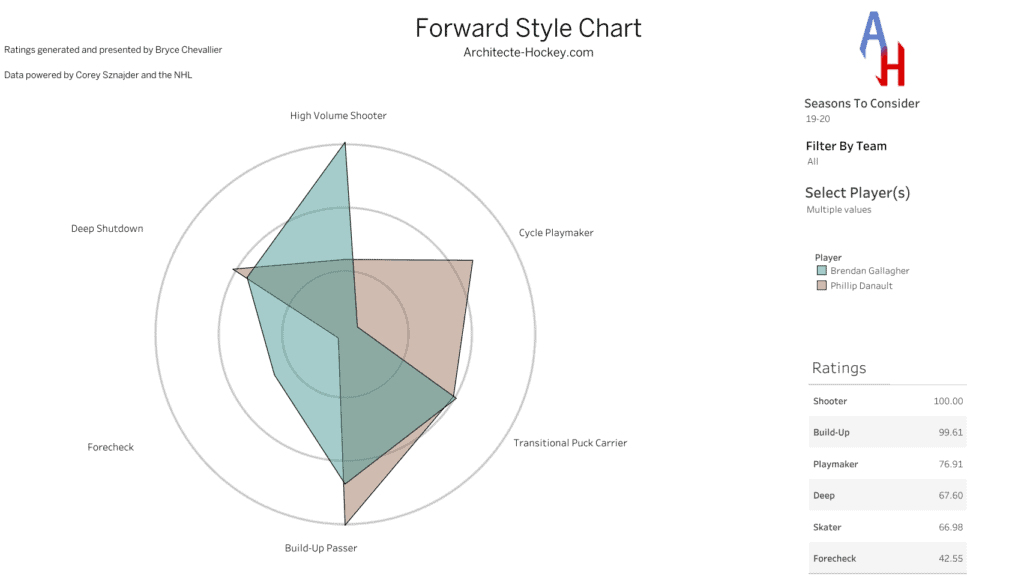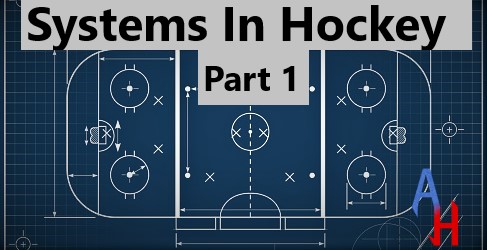How to best analyze hockey? This is a question that coaches, scouts, data nerds, media members and fans have been trying to find the answer to since the game was created. We will likely never find the exact answer, but we’re certainly getting closer every day.
That’s why I’m starting this series. Throughout these posts, I will be dissecting different areas of the game and how they connect with each other. I will also be diving into how to use stats to quantify various areas beyond simply relying on our intuition.
Today I’m starting with a principle overarching all of this: systems and how to think about them.
Analytical Thinking
What researchers have found is two primary ways of thinking. Western society mostly approaches ideas through the lens of analytical thinking. This refers to reducing an idea into manageable parts and analyzing them separately to understand how they work within a system. Everything is then aggregated to describe the system as the sum of its parts. In hockey, we can think of this as giving each player a rating, then combining their ratings to understand the team as a whole.
Another hockey-related example is how traditional analytics think in a linear way. A stat’s relevance is typically measured by how well it correlates to goal differential. The more predictive the stat or event is on goal differential, the better it must be, right? It turns out that this is not necessarily the case. It is definitely easier to talk about events in this linear way. We are indeed brought up to think like this.
However, there are significant limitations to this thinking. Back to the hockey analytics example, many would just tell a team to carry the puck into the zone rather than dumping it in or to stop taking shots far from the net. This is because research says these actions lead to a better goal differential. These are important findings but it isn’t just that simple when applying them. In fact, the best coach in the NHL, Barry Trotz, implements a system designed to do exactly what analytics don’t recommend. I talk more about that system here. Despite our knowledge of what “should” happen, the Islanders always achieve more than the sum of their parts and surprise many analytical models.
What the Islanders create is a key concept that analytical thinking misses; the concept of emergence. Emergence is defined as:
“an entity that is observed to have properties its parts do not have on their own, properties or behaviours which emerge only when the parts interact in a wider whole”.
Think of water particles H20. Hydrogen is not wet, oxygen is not wet, but when put together, the property of wetness emerges.
System Thinking
Systems are seen everywhere in life. From the ecosystem to our digestive, nervous and cardiovascular systems. Thinking in systems is a highly researched topic. It gives the ability to better understand how things work together. Most importantly, it can be applied to hockey.
The purpose of system thinking is to stop breaking things apart in order to understand them and view them through the lens of “what is this a part of.” It needs to be understood that each and every system is part of a larger system and has a specific purpose.
In order to achieve system thinking we need to view things in circular patterns rather than the previously mentioned linear one. We can’t think of how singular events affect the whole, but need to switch our perspective to pattern observation.

The diagram is very simple but gets the principle ideas of a feedback loop. It’s also important to consider that every loop is impacted by the environment it exists in. In hockey, we can think of the environment as the game against specific opposition. Then, the inputs are the players or tactical instructions, the process is play itself and the outputs are goals for/against.
When you start thinking this way, you’ll realize that everything is a system made up of multiple other systems and nothing is as linear as it seems. There are many books, courses, videos and information on this subject if you’re interested but you’re here for hockey. So now that the basics are out of the way, let’s get into that.
Thinking Systems in Hockey
We’ve all heard about the coaches’ system and tactics in hockey. However, hockey is actually quite behind in terms of tactics compared to other sports. The coach is primarily used as a man manager and motivator rather than the tactician types we see in soccer. Many would argue that this is due to the nature and chaos of the sport, but I don’t buy it. Don’t get me wrong, tactics are very prevalent and used, but it could be so much better. This is why coaches like Barry Trotz stand so far from the rest – it’s his incredible understanding of systems.
Different areas of play
To understand the different components of a system in hockey, we need to break down play into different phases.
The defensive, transitional, and attacking phase
Hockey is never played with a catch-all system, so to understand these pahses and break them down is where we need to start. Within every phase, there are multiple systems. For example, in the defensive phase (when the opposition has the puck), there must be a forechecking system, a neutral zone forecheck and a defensive zone structure. Each one of the phases has various systems for different situations. I will get into all of these in future posts but this will serve as the introduction.
Basic principles in quantifying systems
When quantifying a system, outputs are key. The entire purpose of the system in hockey is to produce the best output in terms of GF/GA. This is why catch-all statistics such as WAR attempts to measure isolated output per player. However, looking at only the output tells us nothing about how it got there. That’s why simply combining player outputs to measure team strength is a linear and therefore limited way of thinking.
We can try to quantify areas of play within a system that lead to the output but we must also be careful. I will dive deeper into the stats in a respective post. For now, let’s take a look at an example with a chart you can access on this website if you become a patron.

This is what I call a style chart showing both Gallagher and Danault’s styles overlayed onto each other. Each style is a component within a system and the chart shows how well a player fulfills that role. This allows us to see why Danault and Gallagher form one of the best lines in the NHL. Danault sits deep, he’s a great passer and sets up Gallagher who takes the shots and forechecks. They complement each other well to create results many analysts wouldn’t have predicted.
The point is, we can’t just say “good teams score highly in a specific stat so we need players that do that to win.” Even players who have good output measuring stats such as WAR can’t just be combined into a winning recipe. Every style component interacts with each other, to create something greater than the sum of its parts. I have more exciting tools and research coming out on just that so stay tuned.
Going Forward
This will be an exciting series into the tactical side of hockey. I will be featuring new stats and tools that can be used to optimize player evaluation and many other findings. This post is important as system thinking is the basis of all of it. Hopefully, you gain new insight into understanding hockey over the course of this series.
Finally, I will leave you with a reminder to sign up for the newsletter to never miss a post and this link to support me as well as get access to all the data and stats on this website.



Great read! Can’t wait for part II!